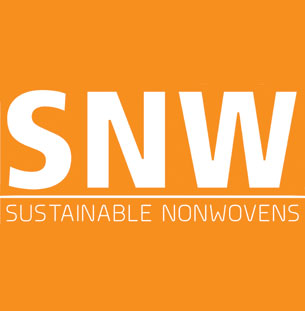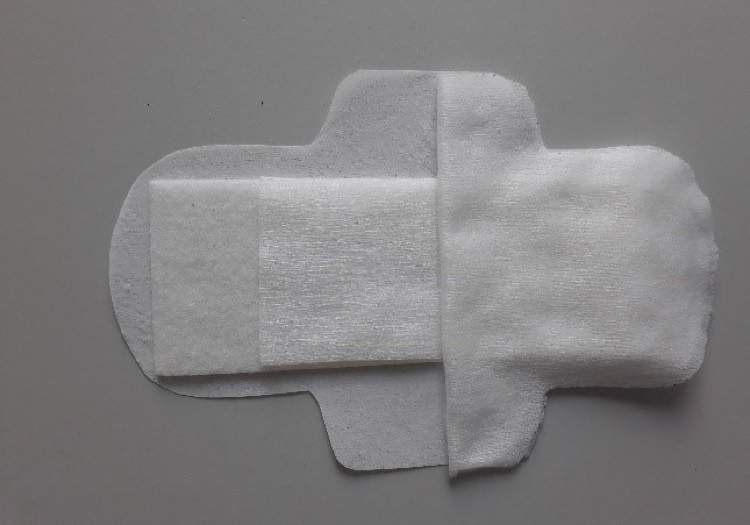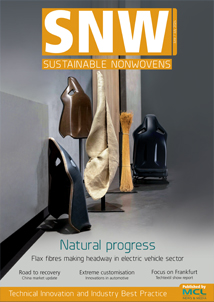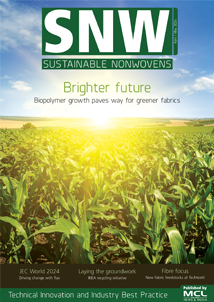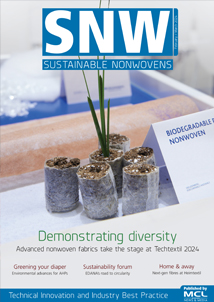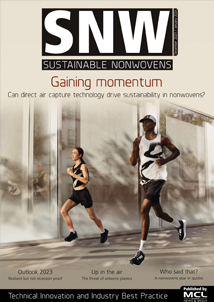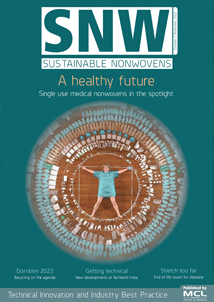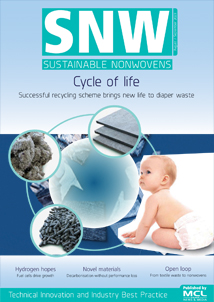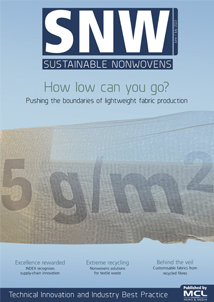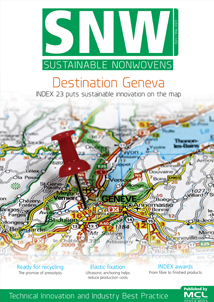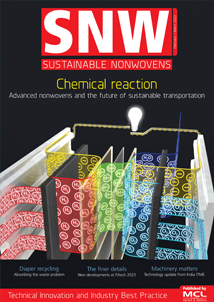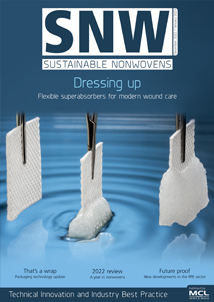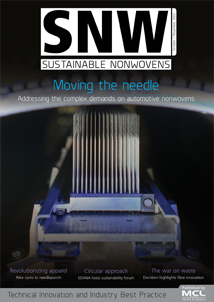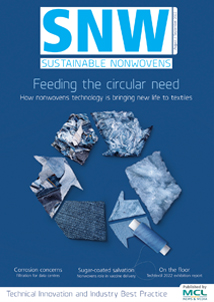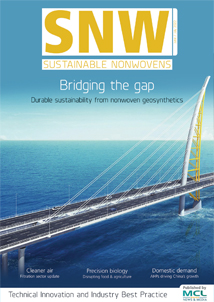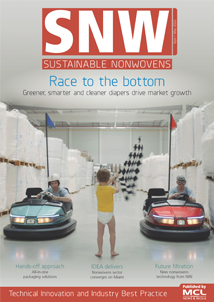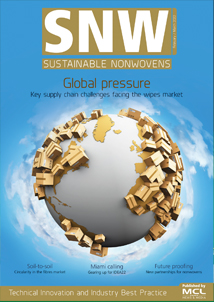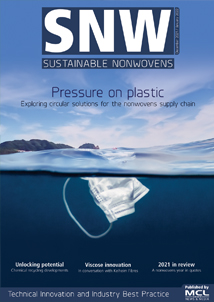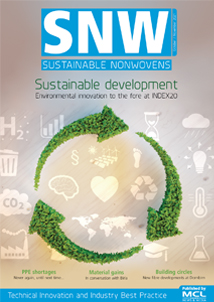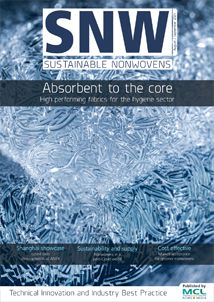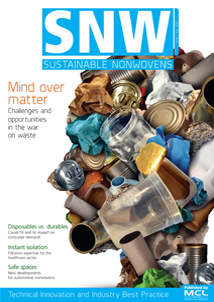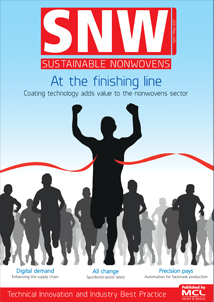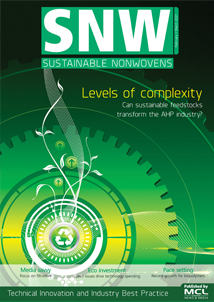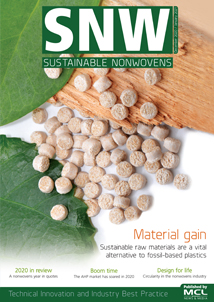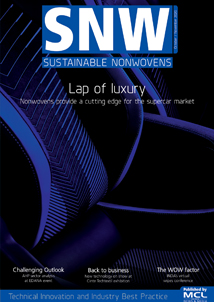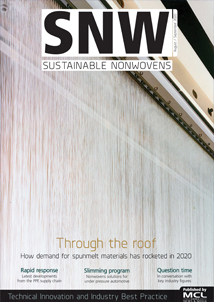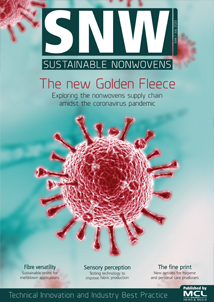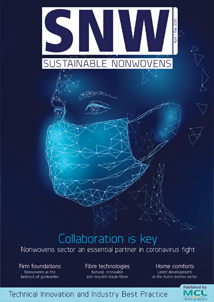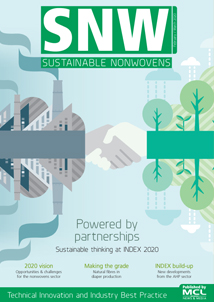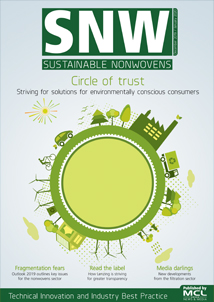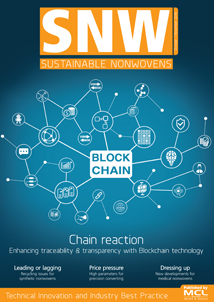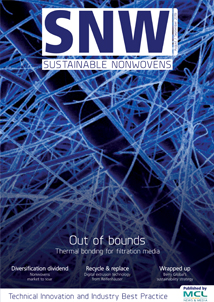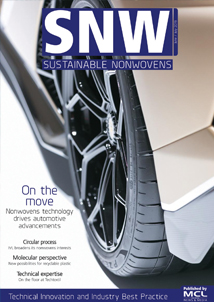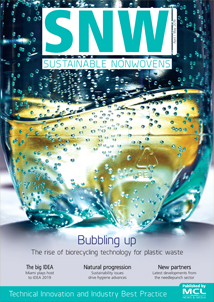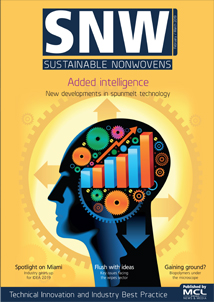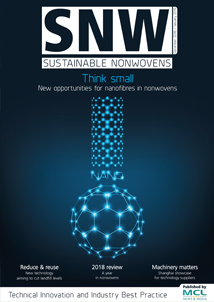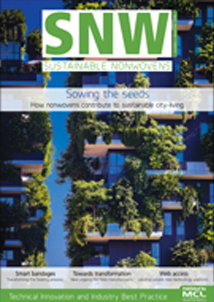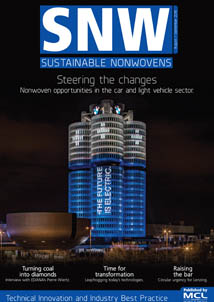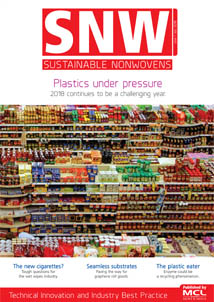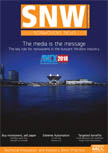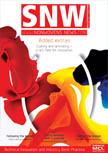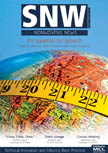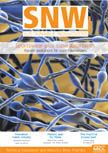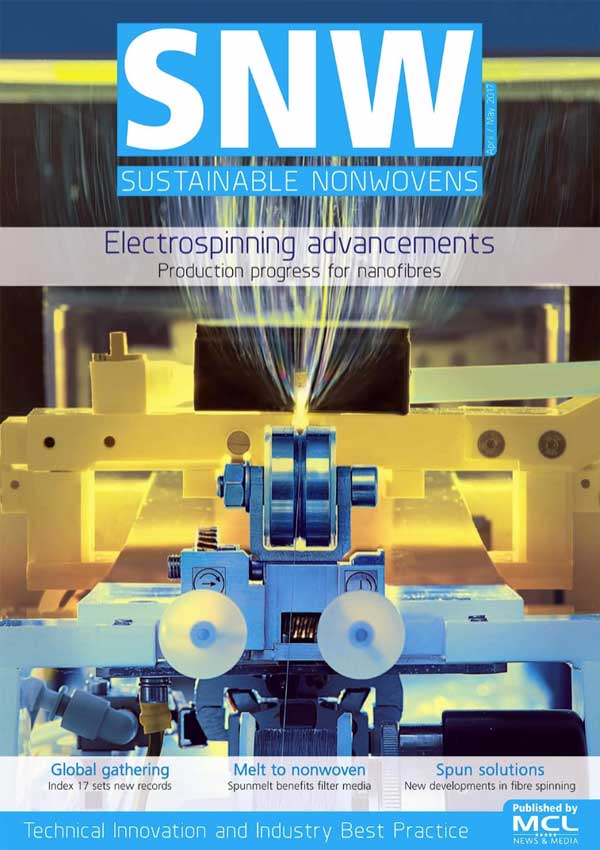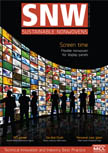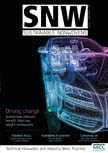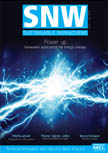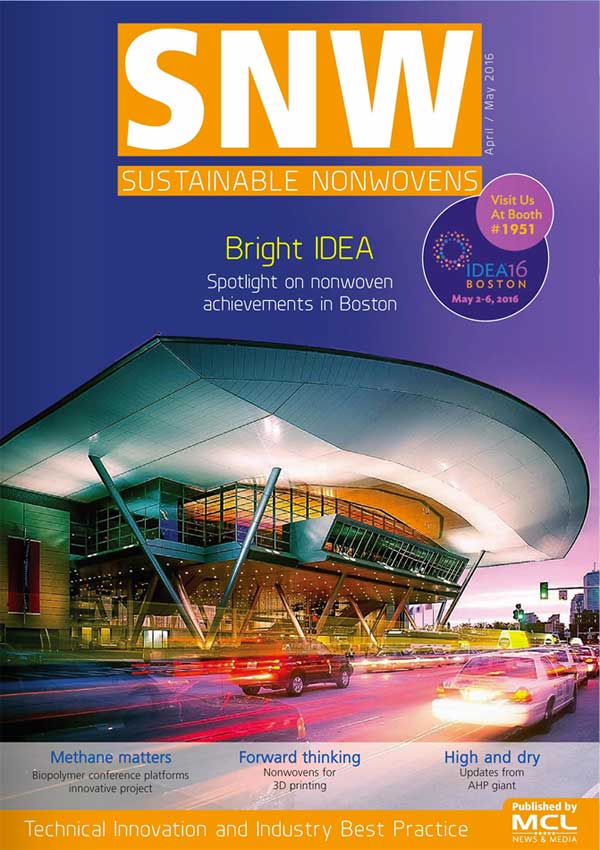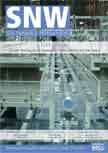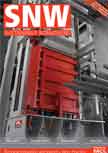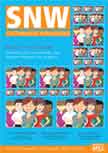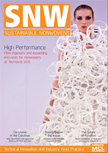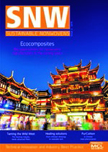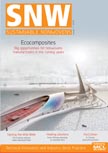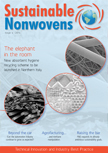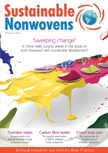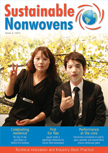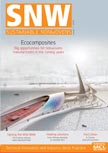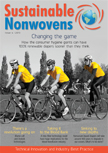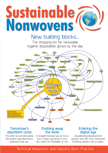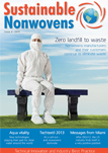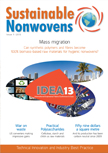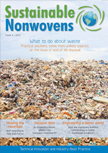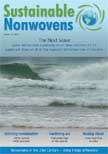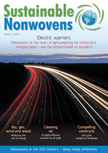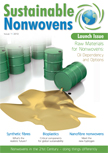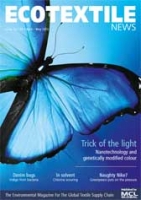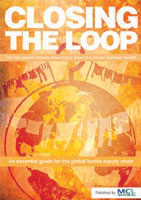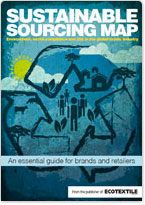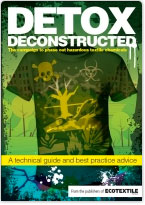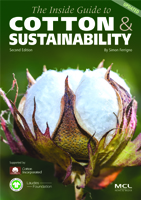CHEMNITZ - A team from the Saxon Textile Research Institute (STFI) will be at April's INDEX exhibition where it will present its latest research products including its bio-based hygiene nonwoven, its VliesSMC recycling project, an innovative hose liner system, and water jet nonwovens made from recycled fibers.
The starting point for BioHyg was the search for a washable and therefore reusable absorbent pad made from completely bio-based materials for applications in baby, feminine and incontinence hygiene.
The focus was on two main requirements; fast and efficient liquid distribution and high absorbency to minimize rewetting and leakage. Both are guaranteed by special viscose fibres from Kelheim Fibres, which have been making this essential contribution in absorbent hygiene products such as tampons for many years.
Here, the advantages of nonwovens in combination with special viscose fibres in terms of absorptive capacity (through, for example, more open-pored structures) have been perfectly transferred from the petrochemical to the world of biobased fiber materials. For reusable products, however, there is another challenge to overcome. They must remain stable during washing and over several cycles of use. To ensure this, an innovative nonwoven construction was developed at the STFI, which notes that the resulting nonwovens close the technological gap between sufficient dimensional stability and as little fibre damage as possible due to the bonding mechanisms.
The nonwoven layers can be used as a stand-alone solution as a single-use product with bio-based materials or integrated into a washable composite structure, such as the diaper from start-up Sumo. In the Sumo cloth diaper, the absorbent pad's fluid management has been designed to set new standards. The new solution combines the worlds of hygiene and sustainability and provides proof that high-performance reusable absorbent products can be developed without fossil materials.
The research collaboration between STFI, Kelheim Fibres GmbH and Sumo GmbH received the 2022 Techtextil Innovation Award in the "New Concept" category for the development of a bio-based hygiene nonwoven - a good example of how research and industry are breaking new ground in sustainability through collaboration in an open innovation approach.
VliesSMC
Also on show will be the STFI's work on the recycling of high-performance fibres, which includes a battery housing developed jointly with research partner Fraunhofer ICT, Pfinztal.
Detailed investigations into the use of recycled carbon fibres in the SMC process chain have been carried out in Chemnitz including the development of nonwovens that enable the recycled carbon fibres to be fed into the SMC plant. The SMC semi-finished products can then be processed by both molding and impact extrusion. A comparison with conventional SMC products showed that comparable characteristic values could be achieved with a lower fibre volume content. Developments in the field of renewable raw materials in combination with bio-based resin systems also offer forward-looking materials.
Hose liner system
The aim of the hose liner system research project was to develop an improved pipe liner system for trenchless pipe rehabilitation. In particular, the force absorption in the longitudinal direction and the bendability without wrinkling were improved and the use of material as well as the pore volume of the textiles were optimized for the best possible impregnation with resin.
The project included nonwoven development, coating of the liners and the use of UV-curable resins for curing. At INDEX STFI will present a demonstrator showing a nonwoven-based pipe liner with coating, which in turn was impregnated with a UV-curable resin and cured using UV LED lamps.
Water-jet
Visitors at the booth will also be able to explore nonwoven structures that have been bonded by the waterjet process or stitch-bonding technologies after mechanical recycling by means of a tearing machine.
The nonwovens are characterized by their soft feel and unique appearance. Whether wet-strength wipes, classic knitted pile fibre nonwovens with cushioning and insulating properties or sustainable needle-punched nonwovens, by using torn fibers in combination with established nonwoven formation processes, new applications for used textiles are found at STFI and material cycles are closed.
STFI can be found at Booth no. 1369.
